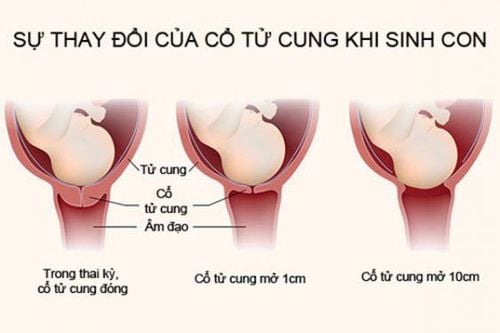This is an automatically translated article.
The article is professionally consulted by an Anesthesiologist, anesthesiologist, anesthesiologist - Department of General Surgery & Anesthesia - Vinmec Hai Phong International General Hospital.
Epidural and spinal anesthesia are the same two procedures used to relieve pain during vaginal birth or cesarean section, but are completely different, causing confusion for many women, affecting decisions. selection during labor.
1. Difference between epidural and spinal anesthesia
The same anesthetic helps the mother to be painless during normal or cesarean delivery, making labor more gentle, but epidural and spinal anesthesia are completely not synonymous with each other. The confusion between these two methods can cause many pregnant women to make the wrong choice in their childbirth. Thereby, pregnant women need to consult carefully and be fully consulted by doctors before deciding to choose an anesthetic technique for childbirth. If using the vaginal delivery method, the mother should choose an epidural, and in the case of a cesarean section, a spinal anaesthetic should be performed.Pregnant women can distinguish the difference between the two methods of epidural and spinal anesthesia through the following table:
| Gây tê ngoài màng cứng | Gây tê tủy sống | |
| Khái niệm | Kỹ thuật gây tê ngoài màng cứng là khi bác sĩ tiến hành tiêm thuốc gây tê vào khoang màng cứng. Tác dụng gây tê thường xuất hiện sau 15 phút. | Kỹ thuật gây tê tủy sống là khi bác sĩ tiêm thuốc gây tê trực tiếp vào dịch não tủy. Hiệu quả gây tê thường đạt chỉ sau 5 phút. |
| Chỉ định |
Giúp giảm đau trong quá trình chuyển dạ tự nhiên, hay còn gọi là đẻ không đau. Thai phụ có thể yêu cầu thực hiện ngay lúc nhập viện. Thông thường, kỹ thuật này thường được tiến hành khi sản phụ có dấu hiệu chuyển dạ và cổ tử cung đã mở rộng khoảng 2 - 3 cm. |
Gây tê tủy sống thường được ứng dụng nhiều hơn trong phẫu thuật mổ lấy thai. Hầu hết các ca sinh sử dụng kỹ thuật này lại được thực hiện theo chỉ định của các bác sĩ trong phẫu thuật mổ lấy thai cấp cứu hoặc theo yêu cầu của chính thai phụ từ ban đầu để sinh mổ chủ động. |
| Mức độ nhận biết cơn đau | Gây tê ngoài màng cứng cho phép người mẹ khi sinh nhận biết được sự xuất hiện của các cơn gò tử cung và vẫn trải qua quá trình rặn đẻ như bình thường. | Gây tê tủy sống có tính chất hoàn toàn ngược lại khi thai phụ bất động nửa thân dưới trong nhiều giờ liền dù em bé đã được các bác sĩ đưa ra khỏi bụng mẹ. Mẹ chỉ bắt đầu cảm thấy đau nhức toàn thân khi thuốc tê hết tác dụng hoàn toàn. |
| Thời gian chờ của thuốc | Thời gian chờ tác dụng của thuốc tương đối ngắn. Đặc biệt, thuốc ít có tác động lên hệ tim mạch và hệ thần kinh trung ương. | Thời gian chờ tác dụng của thuốc dài hơn và có khả năng tác động lên hệ tim mạch và thần kinh trung ương. |
| Kiểm soát mức độ giảm đau |
Thai phụ được gây tê ngoài màng cứng có thể kiểm soát được mức độ giảm đau hay không tùy thuộc phần lớn vào tư thế khi gây tê và tỷ trọng của thuốc. Thông thường rất khó để người mẹ tự kiểm soát mức độ giảm đau. Tác dụng của thuốc không kéo dài lâu. Trong trường hợp phẫu thuật kéo dài, phải tiến hành gây tê lặp lại từ đầu. |
Thai phụ dễ kiểm soát mức độ giảm đau và chỉ phụ thuộc đa số vào thể tích thuốc đưa vào cơ thể mà thôi. Tác dụng gây tê của thuốc dễ kéo dài hơn bằng cách bơm thêm thuốc vào thông qua ống thông tĩnh mạch (catheter). |
| Tác dụng không mong muốn | Có nguy cơ xảy ra tác dụng phụ liệt dây thần kinh sọ, vận động chậm hơn sau khi sinh. Liều lượng thuốc sử dụng thường thấp hơn. | Hiếm khi gặp trường hợp liệt dây thần kinh sọ hơn. Thai phụ vận động nhanh sau sinh hơn. Liều lượng thuốc sử dụng cao hơn. |
2. When should a pregnant woman not have an epidural?
Pregnant women will not be able to perform painless delivery with epidural anesthesia if they fall into one of the following situations:Have been taking drugs containing blood thinners during pregnancy. The blood quality is not qualified for the procedure, easily affecting the clotting process. I have an infection in my back. The patient is being treated for cardiovascular disease or severe liver disease. The epidural technique can be applied to most women who give birth naturally, but there is a risk of unwanted effects. Therefore, pregnant women should learn carefully the information, consult a specialist before requesting to use this method to relieve pain during childbirth.

Thai phụ rối loạn đông máu không được thực hiện gây tê ngoài màng cứng
3. Contraindications to spinal anesthesia
In the following situations, pregnant women should not choose to perform spinal anesthesia :Suspect and refuse anesthesia Anesthesia allergy Severe decrease in blood circulation The area where the needle is inserted is infected or have severe systemic infections Have spinal deformities Bleeding disorders or are taking anticoagulants Epilepsy, mental illness, convulsions Severe cardiovascular disease Thus, to make pregnant women feel secure during labor If successful, understanding the necessary knowledge to distinguish the two methods of epidural and spinal anesthesia will help future mothers be more stable in the arduous but also extremely happy birthing journey. happy in the sacred moment when the baby is born.
Epidural and spinal anesthesia techniques are applied at Vinmec International General Hospital to help pregnant women experience painless, gentle labor successfully. At Vinmec, there is a team of experienced and professional anesthesiologists who will help pregnant women experience the safest, painless delivery.
Please dial HOTLINE for more information or register for an appointment HERE. Download MyVinmec app to make appointments faster and to manage your bookings easily.













